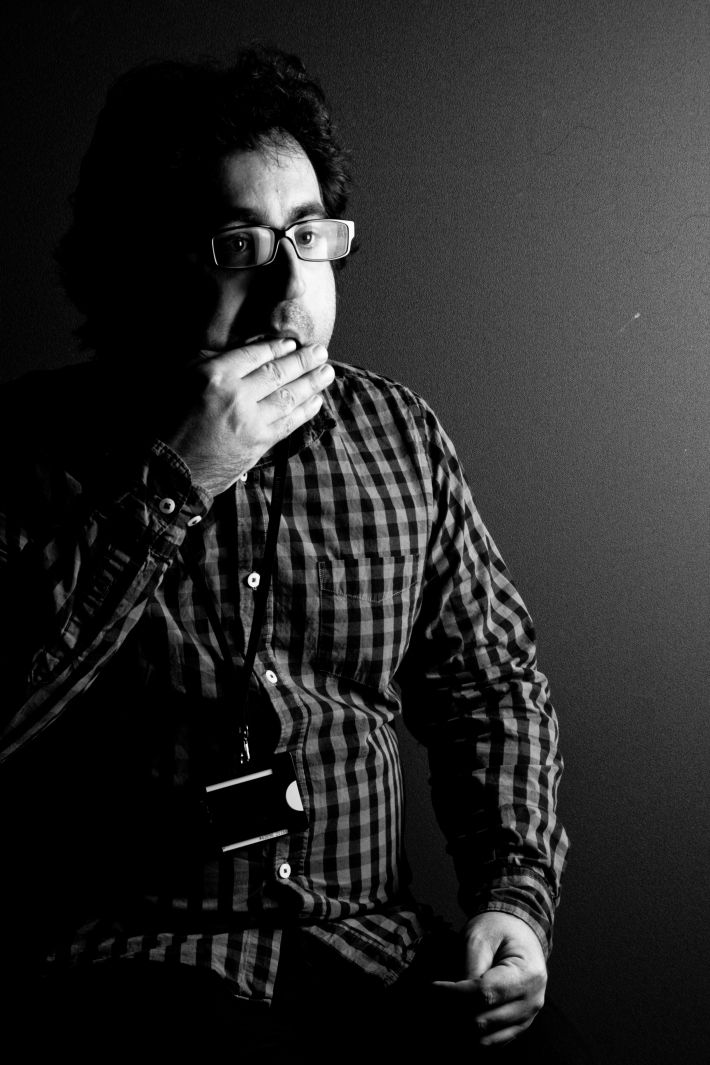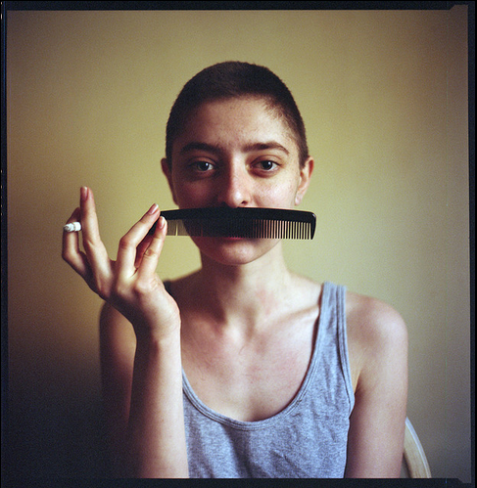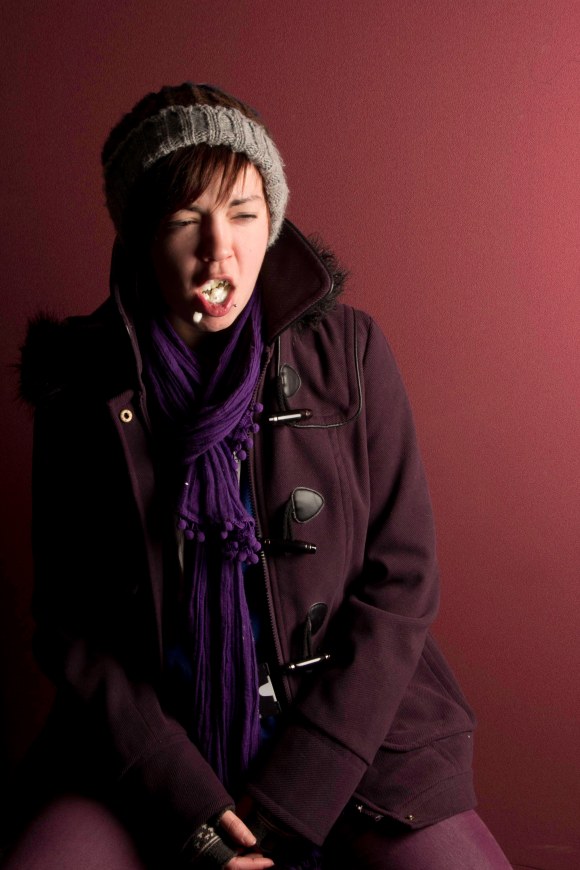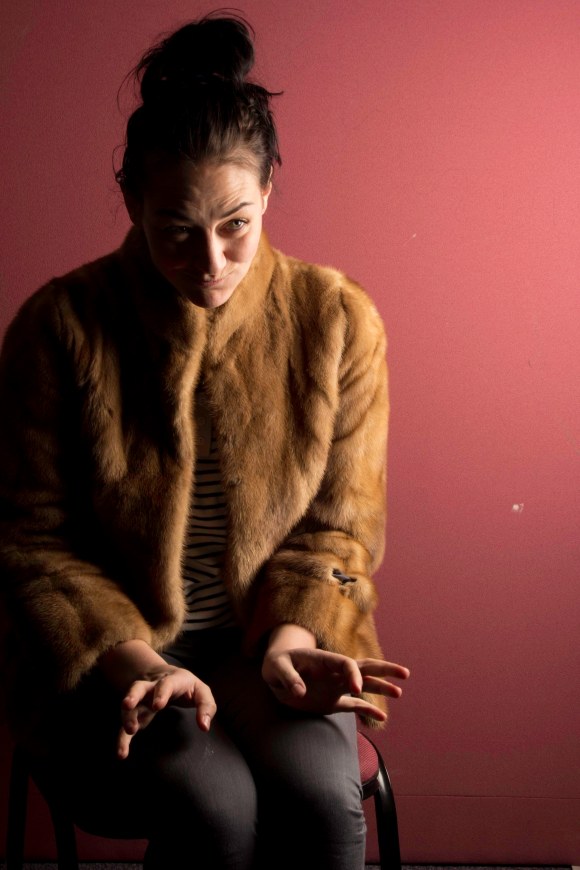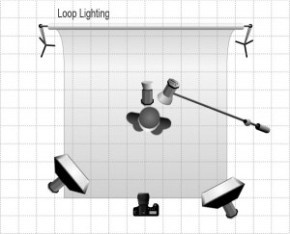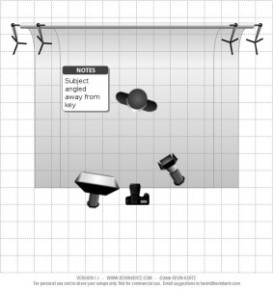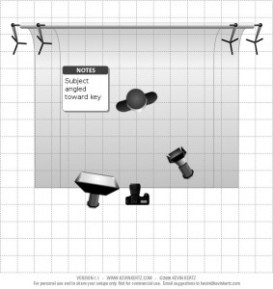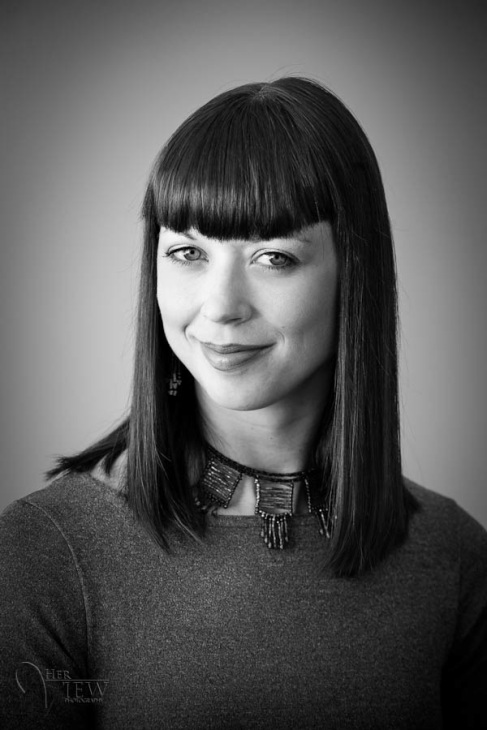Butterfly light is considered to be the most flattering and artistic way of lighting a portrait subject. As it’s name would denote, Butterfly Lighting is created by the way in which you angle the light to fall on the face of your subject. This style of lighting can be achieved by a single off camera light and a reflector.
Here’s a step by step guide of how to achieve perfect butterfly lighting from the Digital School of Photography website:
1. Face your subject at 7.8 view: Start by facing your subject directly to the camera, then turn the head just to hide the far ear. This view of the face is most flattering as it minimizes the face.
2. Hold your off camera flash 1′ above your subject, and 3′ toward the front to eliminate any possible shadowing on the face. You will also create a shadow beneath the chin, thus hiding any excess weight there.
3. Place a reflector just below the edge of your frame. The closer your reflector is to your subjects chin, the more even the spread of light. This reflector will soften that shadow and eliminate a harsh contrast.
4. Light for catch lights: You want your subjects eyes to be well lit and fortunately, with the angle of your main light in front/above, and the fill light coming in from below, your subject should have large round catch lights in both the bottom and top part of the eye.
For such beautiful results, Butterfly Lighting is among the most simple of the “directed” studio lighting options. As you can see, Butterfly Lighting will yield gorgeous results, without a great deal of precision or drama.
Read more: http://digital-photography-school.com/how-to-achieve-perfect-butterfly-lighting#ixzz2Uud63ZQ2

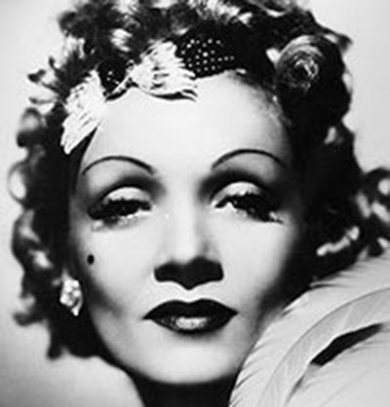

This is the image I created. I set up the lighting exactly as I should have but could not seem to get the dramatic effect you see in the example image.


